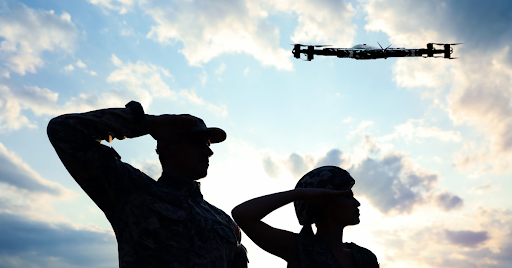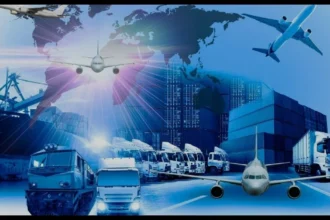Military surveillance drones are revolutionizing modern warfare and intelligence gathering, providing real-time data and enhanced situational awareness for defense forces. These unmanned aerial vehicles, or UAVs are conducting reconnaissance, tracking enemy movements, and relay crucial information without risking human lives. As technology evolves, military surveillance UAVs become more advanced.
New drone technologies improve real-time intelligence with high-resolution imaging, automated target recognition, and secure data transmission. AI-powered analytics process vast information quickly, providing actionable insights for military personnel. Stealth technology and miniaturization allow drones to operate undetected, making them essential for combat and surveillance missions.
As security threats evolve, military surveillance drones play a vital role in defense strategies worldwide. Nations invest in drones with superior endurance, faster data processing, and improved communication.
In this article, we will discover how drone technology is changing military surveillance.
The Evolution of Military Surveillance Drones in Modern Warfare
Military surveillance UAVs have changed significantly, transforming from basic reconnaissance tools into sophisticated intelligence assets. Early unmanned aerial vehicles (UAVs) were primarily used for surveillance and target spotting, offering limited operational capabilities. However, technological advancements have led to drones with enhanced autonomy, improved sensors, and greater endurance, making them indispensable for modern military operations.
During the early stages of drone development, nations relied on rudimentary UAVs for aerial reconnaissance, reducing the need for manned aircraft in hostile environments. Over time, improvements in camera technology, GPS navigation, and real-time data transmission have allowed drones to conduct more complex surveillance missions. Today, drone military surveillance systems can track enemy movements, detect threats, and relay high-resolution imagery to command centers within seconds.
Modern military drones now feature AI-driven analytics, stealth technology, and extended flight durations, making them highly effective for intelligence gathering. Nations continue to invest in next-generation drone systems capable of operating in contested environments with minimal detection. As warfare becomes increasingly technology-driven, drone military surveillance capabilities will continue to evolve, ensuring real-time intelligence and strategic advantage on the battlefield.
Cutting-Edge Technologies Enhancing Drone Intelligence and Reconnaissance
Advancements in drone technology have significantly improved intelligence-gathering capabilities, making military surveillance drones more effective in modern warfare. These innovations enhance reconnaissance, stealth, and real-time decision-making. Here are six key technologies driving the evolution of drones military surveillance systems:
- AI-Powered Target Recognition – Artificial intelligence enables drones to identify, track, and classify targets with high accuracy, reducing human workload and response time.
- High-Resolution Imaging and Thermal Sensors – Advanced cameras and infrared sensors allow military surveillance UAV systems to capture detailed images, even in low-visibility conditions.
- Stealth and Low-Observable Technology – Cutting-edge materials and designs minimize radar detection, allowing drone military surveillance to operate covertly in hostile environments.
- Real-Time Data Processing and Transmission – Enhanced communication systems enable military surveillance drone units to relay critical intelligence instantly, ensuring rapid decision-making.
- Extended Flight Endurance and Energy Efficiency – Improvements in battery life, solar power, and fuel efficiency allow drones to stay airborne for longer missions without refueling.
- Swarm Drone Capabilities – AI-driven drone swarms enhance battlefield coordination, allowing multiple UAVs to communicate and execute complex surveillance operations simultaneously.
These innovations ensure that military surveillance drones remain at the forefront of defense strategies, providing real-time intelligence and strategic advantages on the battlefield.
The Role of AI and Automation in Military Drones
Artificial intelligence (AI) and automation have transformed military surveillance drones, making them more efficient, autonomous, and capable of real-time decision-making. These technologies enhance intelligence gathering, threat detection, and operational effectiveness with minimal human intervention. As AI continues to evolve, surveillance drones military systems are becoming smarter, allowing them to adapt to dynamic battlefield conditions.
Here are three main advantages of AI and automation in drone for military surveillance operations:
Enhanced Target Recognition and Threat Detection
AI-powered drones can analyze vast amounts of data, identify potential threats, and differentiate between enemy forces and civilians. This reduces the risk of misidentification and improves mission accuracy. Advanced machine learning algorithms allow surveillance drones military systems to recognize patterns and anomalies in real-time.
AI-powered drones can analyze vast amounts of data, identify potential threats, and differentiate between enemy forces and civilians. This reduces the risk of misidentification and improves mission accuracy. Advanced machine learning algorithms allow surveillance drones military systems to recognize patterns and anomalies in real-time.
Autonomous Navigation and Mission Execution
Automated drones can operate independently, reducing the need for human control and intervention. They can navigate complex terrains, avoid obstacles, and adjust flight paths based on mission objectives. With AI-driven autonomy, a drone for military surveillance can conduct reconnaissance missions in high-risk areas without endangering personnel.
Real-Time Data Analysis and Decision Support
AI enables drones to process and analyze surveillance data instantly, providing commanders with actionable intelligence. This enhances situational awareness and improves decision-making in critical operations. By integrating AI-driven analytics, surveillance drones military systems can predict enemy movements and support strategic planning.
As AI technology continues to advance, the role of automation in military surveillance drones will expand, ensuring greater efficiency, accuracy, and adaptability in modern warfare.
Stealth and Endurance: Advancements in Drone Capabilities
Stealth and endurance are critical factors in enhancing the effectiveness of military surveillance drones, allowing them to operate undetected and conduct long-duration missions. Modern advancements in drone technology focus on minimizing radar visibility, reducing noise levels, and extending flight endurance. These improvements enable drones for military surveillance to gather intelligence in high-risk areas without being detected.
One of the key advancements in stealth technology is the development of radar-absorbing materials and low-observable designs. By incorporating these innovations, drones surveillance can evade enemy detection systems, making them ideal for covert reconnaissance missions. Additionally, noise-reduction technologies help drones operate silently, further enhancing their stealth capabilities.
Endurance has also seen significant improvements, with drones now featuring extended battery life, fuel-efficient engines, and solar-powered systems. These advancements allow drones for military surveillance to remain airborne for extended periods, covering larger areas and providing continuous real-time intelligence. With ongoing innovations, stealth and endurance will continue to shape the future of military drone, ensuring superior operational effectiveness in modern warfare.
Conclusion
The advancement of military surveillance drones has revolutionized modern warfare by improving intelligence gathering, autonomy, and operational efficiency. However, as noted by Foreign Policy, early drones encountered significant challenges. These challenges include crashes caused by harsh weather, communication failures, and human error.
Over time, technological improvements have enhanced drone reliability, reducing these issues and making unmanned systems more effective. The next-generation innovations of military surveillance drones will remain crucial for real-time intelligence, reconnaissance, and strategic military operations.

















